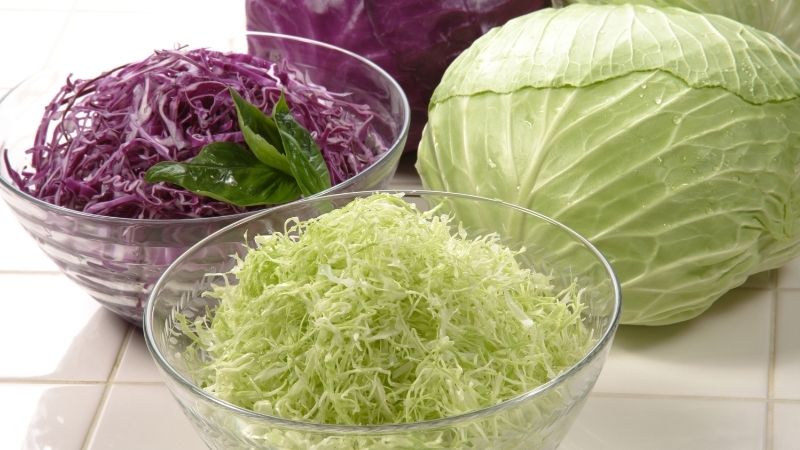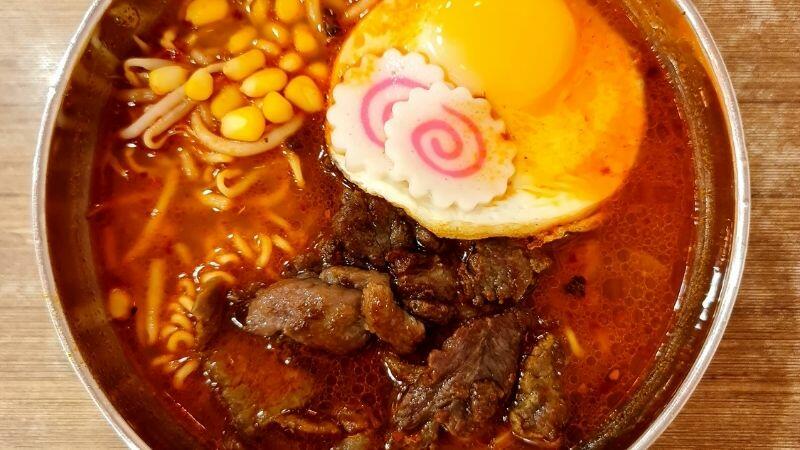Ramen is a delicious Japanese noodle soup with thousands of variations, but sometimes they can get a bit spicy! Some ramen, especially miso and tantan-men ramen, contain spicy pastes or chilis that can make the dish more painful than enjoyable to eat for some people.
Luckily, there are some ways to scale back on the spiciness of some ramen dishes.
Here are five methods to make ramen less spicy:
- Add more non-spicy ingredients.
- Add some dairy.
- Add something sweet.
- Add something acid.
- Add some nut butter.
Reading this article will help you be able to enjoy the deliciousness of ramen without having to worry about the pain of spiciness! Let’s look at each of these tips in detail.
1. Add More Non-Spicy Ingredients

Adding more non-spicy ingredients is an effective way to dilute the
- Broth – Use an unseasoned or non-spicy broth like Simply Asia’s Japanese Inspired Ramen Soy Ginger Chicken Broth. The extra broth will dilute the
spice . or another option such as vegetable broth, dashi, miso broth - Vegetables – Add extra vegetables like spinach, bean sprouts, cabbage, or watercress. The vegetables will soak up some of the
spice . - Starch – Add potatoes or extra noodles like ramen noodles, udon noodles, soba noodles, glass noodles. Starch helps absorb
spice and adds heartiness. - Meat or Eggs – Adding more non-spicy protein like chicken, pork, beef or eggs helps distribute the
spice . - Starches on the Side – Eat plain bread, rice, or potatoes alongside the ramen to calm your palate. The bland starches dilute the ramen’s
spice . - Legumes – edamame, lentils, chickpeas
- Fats/Oils – sesame oil, olive oil, vegetable oil, coconut milk
2. Add Some Dairy

Capsaicin, the ingredient in chilis that causes spiciness, binds itself with casein, present in milk and other dairy products, which neutralizes the
Adding dairy to ramen is a great way to make it taste less spicy. It can also make your ramen taste better! Try adding some heavy cream or sour cream to the soup and mixing it well to make a creamier, more delicious, and less spicy broth. For the best results, use products that are full-fat.
If you’re dairy-free, I suggest adding some coconut milk instead. Unsweetened coconut milk, such as the Thai Kitchen Gluten Free Unsweetened Coconut Milk available on Amazon.com, adds richness and eliminates
If you do add dairy to your ramen, make sure you do so after you’re done cooking the dish. Cooking dairy over high heat can cause curdling, which is not appetizing.
3. Add Something Sweet
Another way to neutralize heat is by adding a little sweetness. Maple syrup, honey, and brown rice syrup are all great sweetening agents for noodle dishes. All you need is a little bit, not enough to influence the flavor but enough to tone down the
You can also try mixing soy sauce with honey for an even more subtle fix to your heat problem. When in doubt, you can always stir in some sugar, but be careful not to add too much, or you risk ruining the flavor profile of your noodles completely.
My favorite brown rice syrup is the Keystone Pantry Organic Brown Rice Syrup on Amazon.com. This syrup is an all-natural sweetener that provides energy to your body and sweetness to your dish, but without adding any overwhelming flavor. This rice syrup is organic and made entirely in the United States.
4. Add Something Acid
Acid neutralizes capsaicin, which helps neutralize spiciness. Adding acidic ingredients to your ramen can combat its intense, spicy flavor.
A great way to add acidity to your noodles is to squeeze some lemon or lime juice on top. I recommend doing this anyway, even if your ramen isn’t too spicy—these juices enhance the other flavors present in most ramen dishes. If you don’t have lemon or lime juice, a dash of vinegar will also do the trick.
If you like tomatoes and you think they’ll fit in with the flavor profile of your ramen, you can dice up some tomatoes and add those to your ramen to help balance out the
If you don’t want to add anything to your ramen but want to use your beverage of choice to combat the spiciness instead, opt for an acidic or sweet wine. An acidic white wine perfectly complements a bowl of spicy noodles. However, make sure that the wine you choose isn’t sparkling. The fizziness of sparkling wine will only make the spiciness of the noodles more noticeable and unpleasant.
5. Add Some Nut Butter

You may think that adding a spoonful of peanut or almond butter to your ramen would make it taste, well, nutty, but you’d be mistaken! Often, with ramen, the other flavors present are so intense that you don’t even notice the taste of the nut butter—you only notice the reduction in
I personally prefer using almond butter over peanut butter, and my favorite kind is the Livlo Macadamia Almond Nut Butter on Amazon.com. This butter doesn’t have any added sugar or oils, and it’s a great source of protein. When I add this to my noodles, I know I’m adding an ingredient that will enhance the dish (and combat the
Instead of peanut or almond butter, you could also add some tahini paste. I like the Baron’s Pure Tahini Sesame Paste on Amazon.com because it has a rich and creamy texture, it’s a great protein source, and it is made with 100% pure sesame seeds.
You Can also Make Something Less Spicy with these 5 Methods!
Don’t limit to ramen, these 5 method also can revive the spiciest dishes more mild. Here are some tips for making other spicy dishes less spicy using similar methods:
Curries
- Add more curry sauce or coconut milk
- Mix in plain yogurt or cream
- Add starchy vegetables like potatoes or sweet potatoes
- Add mild proteins like chicken or shrimp
- Garnish with cilantro, mint or basil
Chili
- Use more tomato sauce or beans
- Mix in extra rice, pasta or bread
- Top with shredded cheese, sour cream or plain Greek yogurt
- Add more ground turkey or chicken
- Garnish with avocado, lettuce or cilantro
Hot Wings
- Make a ranch or blue cheese dipping sauce
- Serve with carrot and celery sticks
- Offer milk or plain yogurt as a cooling dip
- Use less hot sauce or cayenne when cooking
- Switch to a milder hot sauce variety
The main strategies that work across spicy dishes are:
- Adding more mild or starchy ingredients
- Using cooling dairy products like yogurt or cheese
- Garnishing with fresh herbs
- Choosing less spicy varieties of key ingredients
- Serving with something bland like bread or rice
Key Takeaways
If your ramen is too spicy, don’t despair! You’re not doomed to sweating and crying over your bowl of noodles. Instead, try adding something to the dish to dilute or disguise the spicy flavor.
You can add more of any non-spicy ingredient, incorporate dairy, sweetness, or acidity, or throw in a spoonful of nut butter. Then, your bowl of noodles will be just as delicious (if not more so) and just a little less painful!
Sources





